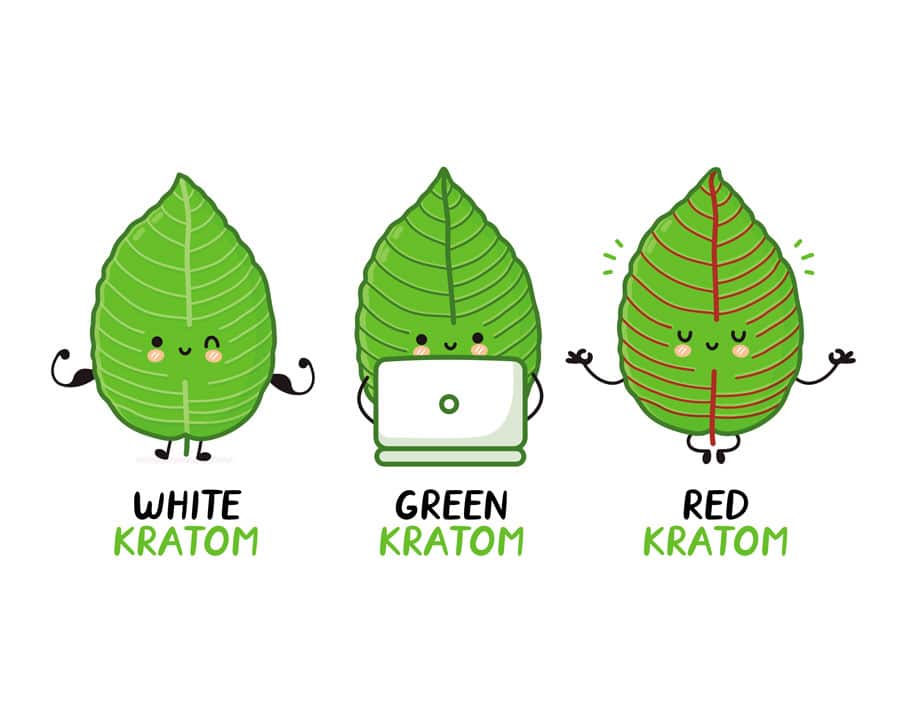
The Sweet Spot: How to Find Your Ideal Kratom Dosage
April 9, 2023
Kratom Industry: Balancing Profit and Environmental Responsibility
April 9, 2023In recent years, the humble kratom plant has taken the world by storm, piquing the interest of millions seeking alternative remedies for a variety of ailments. Hailing from the tropical forests of Southeast Asia, kratom—scientifically known as Mitragyna Speciosa—has been used for centuries by local communities for its purported pain-relieving, mood-enhancing, and energy-boosting properties. Today, the ever-growing buzz around kratom has spurred countless discussions on its potential benefits, risks, and the need for further research.
As kratom gains traction in Western markets, scientists and researchers are racing to uncover the secrets of this enigmatic plant. Although a solid foundation of kratom research has been established, there’s still much to learn about its complex pharmacology and diverse applications. As with any substance that gains widespread popularity, it’s crucial for us to remain informed about the latest findings in kratom research in order to make educated decisions about its use.
Understanding the potential benefits and risks of kratom is essential, not only for individuals considering its use but also for the scientific community, policymakers, and the general public. With a myriad of anecdotal reports touting its efficacy for pain management, anxiety relief, and opioid withdrawal, the stakes are high in the quest for comprehensive, evidence-based insights into this fascinating plant. In this article, we’ll delve into the future of kratom research, exploring the possible breakthroughs on the horizon, as well as the challenges researchers may face along the way.
Potential Breakthroughs in Kratom Research
The future of kratom research is brimming with possibilities, and scientists are continually uncovering new and exciting avenues for exploration. As we venture into this uncharted territory, let’s take a look at some of the potential breakthroughs that could revolutionize our understanding of kratom and its therapeutic applications.
Novel therapeutic applications
- Neurodegenerative diseases Kratom’s potential to alleviate pain and boost mood has been well-documented, but researchers are now setting their sights on its possible applications for neurodegenerative diseases such as Alzheimer’s, Parkinson’s, and multiple sclerosis. Preliminary studies suggest that certain alkaloids found in kratom may exhibit neuroprotective properties, opening the door to a whole new realm of possibilities in the battle against these devastating conditions.
- Immunomodulation and inflammation Another promising area of investigation lies in kratom’s potential to modulate the immune system and reduce inflammation. Some studies have identified immunostimulant and anti-inflammatory compounds in kratom leaves, which could hold the key to developing new treatments for autoimmune disorders and chronic inflammatory conditions.
Improved understanding of kratom’s pharmacology
- Identifying additional active compounds While the alkaloids mitragynine and 7-hydroxymitragynine have been the focus of most kratom research to date, the plant is known to contain over 40 different alkaloids and other bioactive compounds. As researchers continue to delve deeper into kratom’s complex chemistry, they may unearth additional compounds with therapeutic potential, paving the way for a more comprehensive understanding of the plant’s effects.
- Elucidating mechanisms of action Unraveling the intricate mechanisms through which kratom’s various compounds interact with the human body is another crucial aspect of future research. By gaining a deeper insight into the molecular pathways that underlie kratom’s effects, scientists will be better equipped to predict its potential benefits, side effects, and interactions with other substances.
Development of safer and more effective kratom-based products
- Purified and standardized extracts As the demand for kratom continues to rise, the need for high-quality, standardized products becomes ever more pressing. Researchers are working on developing purified and standardized kratom extracts, which could offer a more consistent and controlled user experience while minimizing the risk of contamination or adulteration.
- Combination therapies Exploring the potential synergies between kratom and other therapeutic agents is another fascinating area of research. By combining kratom with other medications or natural remedies, researchers may be able to develop more effective treatment strategies for a range of conditions, from chronic pain management to mental health disorders.
As we delve into the future of kratom research, it’s evident that the possibilities are vast and the potential for groundbreaking discoveries is immense. However, the journey ahead is not without its challenges, and researchers must navigate a complex landscape of legal, methodological, and ethical issues to unlock the full potential of this enigmatic plant.
Challenges in Kratom Research
While the future of kratom research holds immense promise, it’s essential to acknowledge the challenges that scientists and researchers face in their pursuit of knowledge. Let’s explore some of the obstacles that stand in the way of fully understanding this fascinating plant and how these challenges can be addressed to ensure a bright future for kratom research.
Legal and regulatory obstacles
- Variability in kratom’s legal status across countries Kratom’s legal status varies widely across the globe, with some countries embracing its potential benefits, while others have imposed strict bans due to concerns about its safety and potential for abuse. This patchwork of regulations creates an uncertain landscape for researchers, complicating efforts to conduct large-scale, international studies and stifling the exchange of knowledge and resources.
- Impact on research funding and collaboration The legal uncertainties surrounding kratom can also have a significant impact on research funding and collaboration opportunities. Governments and funding bodies may be hesitant to invest in kratom research due to its controversial nature, and researchers in countries where kratom is banned may face difficulties in obtaining and studying the plant.
Methodological and technical limitations
- Standardizing kratom samples for research One of the primary challenges in kratom research is the lack of standardized samples for study. Kratom’s potency and composition can vary widely depending on factors such as the age of the plant, growing conditions, and processing techniques. Researchers must develop methods to standardize kratom samples to ensure consistent and reliable results across different studies.
- Overcoming difficulties in isolating and studying active compounds Kratom is a complex plant containing over 40 different alkaloids and numerous other bioactive compounds. Isolating and studying these compounds is a challenging and time-consuming process, requiring advanced techniques and expertise. Developing more efficient methods to identify and analyze kratom’s active compounds will be crucial in advancing our understanding of the plant’s pharmacology.
Balancing potential benefits and risks
- Addressing concerns about addiction and abuse potential While many people have reported positive experiences with kratom, there are also concerns about its potential for addiction and abuse. Researchers must continue to investigate kratom’s long-term effects and explore strategies to minimize its risks while preserving its therapeutic potential.
- Ensuring rigorous and unbiased evaluation of kratom’s effects As with any area of scientific inquiry, it’s essential that kratom research is conducted in a rigorous and unbiased manner. Ensuring that studies adhere to the highest standards of scientific integrity will be crucial in building a reliable body of evidence to inform future decisions about kratom’s safety, efficacy, and appropriate uses.
Despite the challenges that lie ahead, the kratom research community remains steadfast in its commitment to uncovering the truth about this intriguing plant. By tackling these obstacles head-on and fostering a spirit of collaboration and transparency, we can continue to advance our understanding of kratom and unlock its full potential for the benefit of all.
The Role of Stakeholders in Shaping the Future of Kratom Research
As we continue to explore the complexities of kratom and its potential applications, it’s crucial to recognize the importance of collaboration and communication among various stakeholders. From researchers and scientists to government agencies and kratom users themselves, each group plays a critical role in shaping the future of kratom research. Let’s take a closer look at how these stakeholders can work together to advance our understanding of this remarkable plant.
Researchers and scientific community
- Pursuing innovative research directions To fully unlock kratom’s potential, it’s essential for researchers to think outside the box and pursue innovative research directions. By exploring new avenues and asking bold questions, scientists can push the boundaries of our current understanding and uncover previously unrecognized benefits and applications for kratom.
- Collaborating across disciplines and institutions Kratom research is an inherently multidisciplinary field, encompassing everything from chemistry and pharmacology to psychology and public health. By fostering collaboration across disciplines and institutions, researchers can leverage their collective expertise to gain a more comprehensive understanding of kratom’s effects and potential uses.
Government agencies and policymakers
- Supporting and funding kratom research Government agencies and policymakers have a crucial role to play in promoting kratom research by providing financial support and fostering a favorable regulatory environment. By investing in kratom research, governments can help ensure that future decisions about the plant’s legal status and therapeutic applications are grounded in sound scientific evidence.
- Ensuring evidence-based regulatory decisions As the body of evidence on kratom’s effects continues to grow, it’s essential for policymakers to base their decisions on the best available data. By adopting an evidence-based approach to regulation, governments can strike a balance between protecting public health and enabling access to potentially life-changing treatments for those who need them.
Kratom users and advocacy groups
- Encouraging responsible use and open dialogue Kratom users and advocacy groups play a vital role in promoting responsible use and fostering open dialogue about the plant’s potential benefits and risks. By sharing their experiences and engaging in constructive conversations, users can help dispel myths, address misconceptions, and contribute to a more informed public understanding of kratom.
- Participating in research and sharing experiences Kratom users can also contribute to the advancement of research by participating in studies and sharing their experiences with the scientific community. By providing valuable firsthand insights into the effects of kratom, users can help researchers better understand the plant’s therapeutic potential and identify areas for future investigation.
In conclusion, the future of kratom research depends on the collaborative efforts of diverse stakeholders, each bringing their unique perspectives and expertise to the table. By working together and maintaining an open, evidence-based dialogue, we can pave the way for a deeper understanding of kratom and its potential to improve lives around the world.
Opportunities for Collaboration and Partnerships
As the realm of kratom research grows, so do the prospects for cooperation and collaboration. By uniting their efforts, stakeholders from different sectors can combine resources, exchange knowledge, and work collectively to enhance our understanding of this fascinating plant. In the spirit of collaboration, let’s delve into some of the key players and possible partnerships that could influence the future of kratom research, much like the connections we make in our daily lives.
Academic institutions and research centers
Leading the charge in kratom research, universities and research centers provide priceless expertise and resources to the scientific community. By joining forces with researchers from other institutions, these organizations can stimulate the exchange of ideas, methods, and data, resulting in a richer and more comprehensive understanding of kratom. Moreover, partnerships with government agencies, private firms, and advocacy groups can help obtain funding and resources to support ongoing research and development.
Pharmaceutical and nutraceutical companies
Like any business sector, pharmaceutical and nutraceutical industries have a strong interest in the development of kratom-based products, as these could open up new and profitable markets. By collaborating with academic institutions and research centers, these companies can access state-of-the-art research and insights into kratom’s therapeutic potential. In exchange, they can offer resources, expertise, and backing for the commercialization of kratom-derived medications and supplements, facilitating their entry into the market more swiftly and effectively.
Non-governmental organizations and advocacy groups
Playing a pivotal role in raising public awareness and encouraging responsible use of kratom, non-governmental organizations (NGOs) and advocacy groups are essential partners. By working alongside researchers, government agencies, and private companies, these groups can help guarantee that kratom research is conducted ethically and transparently, and that its findings reach the public in an easily accessible manner. Consequently, NGOs and advocacy groups can leverage their platforms to advocate for evidence-based policy decisions and promote ongoing investment in kratom research.
The Role of Public Education and Awareness
As we delve into the ever-changing landscape of kratom research, it’s crucial not to underestimate the importance of public education and awareness. Just like in other aspects of our lives, acquiring knowledge is key to making informed decisions. In this section, we’ll highlight the significance of sharing accurate information, debunking myths, and cultivating critical thinking to help form educated perspectives on kratom.
Disseminating accurate, research-based information on kratom
Providing the public with reliable, research-based information on kratom is as essential as offering facts on any other subject. By presenting people with the most recent findings from credible sources, we assist them in building a solid understanding of kratom’s potential benefits and risks. This knowledge enables individuals to make well-informed decisions regarding kratom use for themselves and their loved ones.
Debunking myths and addressing misconceptions
With many topics, myths and misconceptions can quickly spread, causing confusion and leading to baseless fears or unrealistic expectations. It’s vital to actively debunk these myths and confront misconceptions, supplying clear and precise information to counter inaccuracies. This approach fosters a more balanced and nuanced understanding of kratom, paving the way for educated discussions and decision-making.
Encouraging critical thinking and informed decision-making
Promoting critical thinking is essential in creating an informed public view of kratom. By motivating people to ask questions, examine sources, and assess evidence, we empower them to think independently and make well-founded choices. This mindset can result in a more responsible and discerning approach to kratom use, benefiting both individuals and society as a whole.
In conclusion, public education and awareness are crucial components of the kratom research landscape. By sharing accurate information, dispelling myths, and encouraging critical thinking, we can ensure that the public is well-prepared to navigate the complexities of kratom and make informed decisions about its use.
Conclusion
As we reach the end of our exploration into the world of kratom research, it’s time to reflect on the potential of this fascinating plant to transform lives, the significance of overcoming challenges and embracing opportunities, and the shared responsibility we all bear in ensuring a safe and scientifically grounded future for kratom.
The potential of kratom research to transform lives
The research conducted on kratom holds immense promise in unlocking new therapeutic applications that could potentially improve the lives of millions worldwide. Whether it’s providing relief for chronic pain sufferers or exploring innovative treatments for neurodegenerative diseases, the potential impact of kratom research is undoubtedly profound. It’s this potential that motivates scientists, policymakers, and advocates alike to continue their pursuit of knowledge in this field.
The importance of overcoming challenges and embracing opportunities
Of course, the path to unlocking kratom’s full potential is not without its obstacles. Legal and regulatory challenges, methodological limitations, and concerns surrounding addiction and abuse potential all present hurdles that must be overcome. By recognizing these challenges and proactively addressing them, we can foster an environment where opportunities for collaboration and partnership thrive, ultimately driving kratom research forward and paving the way for new discoveries.
The collective responsibility to ensure a safe and scientifically grounded future for kratom
Lastly, it’s essential to acknowledge that we all have a part to play in shaping the future of kratom research. Researchers, government agencies, pharmaceutical companies, and advocacy groups must work together to support transparent and ethical research practices. Meanwhile, the general public must remain informed and engaged, fostering a culture of critical thinking and responsible kratom use. By working together, we can ensure that the future of kratom is both safe and scientifically grounded.
In conclusion, the world of kratom research is filled with potential, challenges, and opportunities. As we continue to explore the mysteries of this intriguing plant, let’s remember our collective responsibility to shape a bright and promising future for kratom—one that is built on a foundation of scientific rigor, collaboration, and public awareness.






